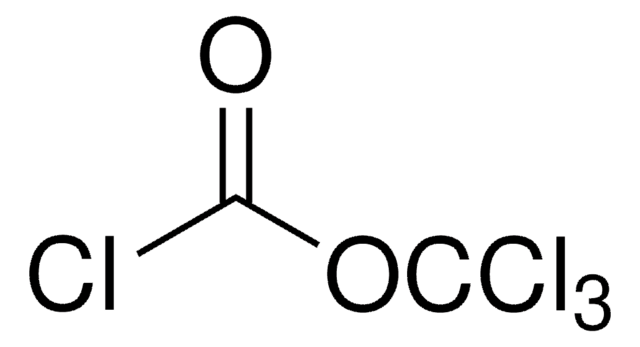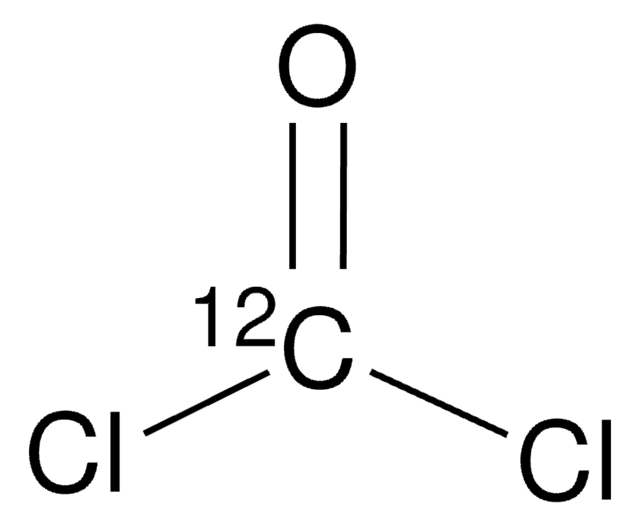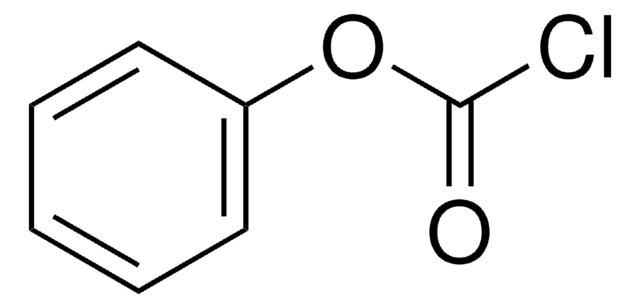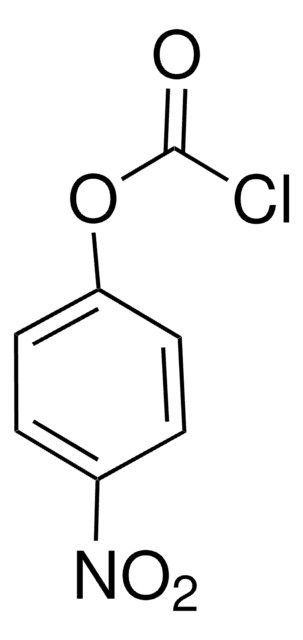79380
Phosgene solution
~20% in toluene
Synonyme(s) :
Carbon oxychloride, Carbonyl chloride, Phosgen
About This Item
Produits recommandés
Forme
solution
Niveau de qualité
Capacité de réaction
reaction type: Carbonylations
Concentration
~20% in toluene
Impuretés
≤300 mg/kg benzene
Groupe fonctionnel
chloro
Température de stockage
2-8°C
Chaîne SMILES
ClC(Cl)=O
InChI
1S/CCl2O/c2-1(3)4
Clé InChI
YGYAWVDWMABLBF-UHFFFAOYSA-N
Vous recherchez des produits similaires ? Visite Guide de comparaison des produits
Description générale
Application
Mention d'avertissement
Danger
Mentions de danger
Classification des risques
Acute Tox. 2 Inhalation - Aquatic Chronic 3 - Asp. Tox. 1 - Eye Dam. 1 - Flam. Liq. 2 - Repr. 2 - Skin Corr. 1B - STOT SE 1 Inhalation - STOT SE 3
Organes cibles
Central nervous system, Lungs
Code de la classe de stockage
3 - Flammable liquids
Classe de danger pour l'eau (WGK)
WGK 3
Point d'éclair (°F)
39.2 °F - closed cup
Point d'éclair (°C)
4 °C - closed cup
Équipement de protection individuelle
Faceshields, Gloves, Goggles, type ABEK (EN14387) respirator filter
Faites votre choix parmi les versions les plus récentes :
Déjà en possession de ce produit ?
Retrouvez la documentation relative aux produits que vous avez récemment achetés dans la Bibliothèque de documents.
Les clients ont également consulté
Notre équipe de scientifiques dispose d'une expérience dans tous les secteurs de la recherche, notamment en sciences de la vie, science des matériaux, synthèse chimique, chromatographie, analyse et dans de nombreux autres domaines..
Contacter notre Service technique















